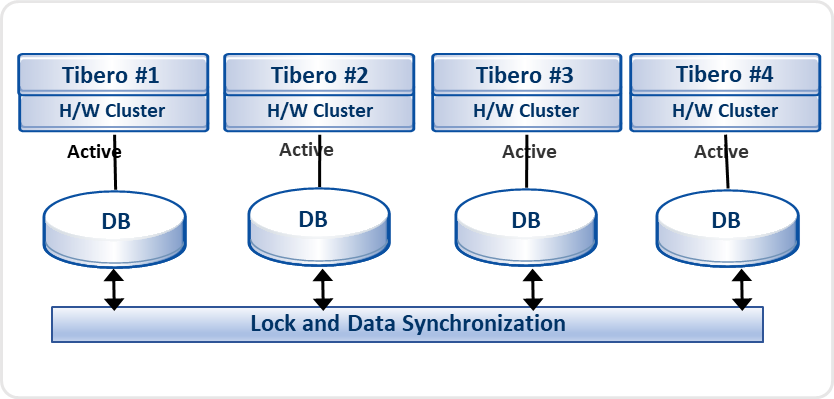Blog / News
- HOME
- About
- Blog / News

by Ronaldo Viana, Senior Database Specialist
Sharks have a bad reputation, but they actually play an important role in the marine ecosystem. They keep populations of marine life in the right proportion by feeding only on the old and sick. This helps keep the right balance of carbon in the oceans so they stay healthy. Also, shark tissue has properties that scientists are studying in hopes of finding treatment for viruses and cystic fibrosis.
A parallel can be drawn between sharks, IT ecosystems, and databases. Monolithic mainframes and disparate legacy databases are old and sick, unable to perform at peak, which affects business. The digital drawing board is littered with great innovations that never went anywhere, an underlying cause of which are slow-moving databases and data in siloes that cannot be accessed.
This doesn’t have to be the case. In a world where data is at the core of everything, a shark of an RDBMS available from TmaxSoft and hosted in the cloud offers your enterprise high availability and an enhanced view of processing, managing and securing large-scale databases.
What is Tibero?
With a name that’s close to tiburón, the Spanish word for shark, Tibero can help keep your IT ecosystem healthy by weeding out its old and inefficient aspects. Highly compatible with Oracle, Tibero can be installed on any cloud platform, offering the option of moving your database management workload (and eventually even your databases) to the cloud and a simple licensing model much like software as a service (SaaS) subscription pricing. It enables a stable and efficient management of DBMSs (database management systems) and guarantees high-performance transaction processing.
Tibero’s multi-thread, multi-process architecture ensures performance and reliability. Additionally, it provides users and developers with various standard development interfaces to easily integrate with other DBMSs and third-party tools.
Highly Available Data Sharing with Tibero
For a database administrator (DBA), there are several technical assignments that are part of their day to day responsibilities. One is to prevent the most varied types of failure and to ensure the continuity of business. In this sense, it is good practice to implement a database system in high availability, called a high availability cluster.
There are two models in the market, active-active and active-passive clusters. Active-active clusters consist of using a shared disk storage area, accessible by “n” data servers that integrate a cluster. These, in turn, have mechanisms of prevention and rapid detection of failures and mechanisms of fault tolerance. That is, when one of the servers, integrated into the cluster, presents a problem – whether it is logical or physical, based on the failover mechanism, it is possible to automatically redirect the sessions on the server that presented some failure to another available server.
In the active-passive method, a server receives and treats all requisitions. When there is confirmation of data, it is sent by a network log writing engine, Log Network Writer (LNWR) and can be configured for information protection. Thus, there is no delay in the propagation of information. But, the performance of the production environment can be impaired. Because it is more accessible, this second method is more commonly used for disaster recovery than for high availability. There is also the possibility of using the passive server as “read only” in read-only mode.
The best solution for data that is business critical is the active-active method, with high availability. Every process occurs in an automated and transparent way to the end user. In addition, there are server virtualization devices that manage the data files pertinent to the DBMS within a redundant set of independent disks.
Along with middleware called Tmax, Tibero provides the architecture for a reliable, high-performance database with full support for redundancy and failover options. Tibero systems, using Tibero Active Clusters (TAC), ensures stability and high availability. Based on shared-disk Active Clustering provides stable service without any system downtime, despite diverse errors.
TAC allows instances on different nodes to share the same data via the shared disk. It supports stable system operation (24x365) with the failover function, and optimal transaction processing by guaranteeing the integrity of data in each instance’s memory.
You can configure Tibero in an active-active infrastructure, which harnesses computers running the same operations in tandem. If one system fails, the applications and database access automatically switch over to the other node. The connections to the database switch over through a flotation of a virtual IP (VIP) address. Active-active clustering helps keep the data you’ve been collecting, capturing, and analyzing for years up and running.

Through Active-active clustering, Tibero supports complete load balancing and ensures data integrity. Using a global cache, it shares a buffer cache between instances. Tibero Cluster Manager (TBCM), another Tibero feature, easily manages clusters and improves availability. The nodes in TBCM monitor other nodes by periodically sending and receiving a heartbeat using a network or a shared disk. The heartbeat allows a node to notify other nodes that it is functioning.
Tibero Cloud Architecture
Tibero selects an architecture to provide an optimized DBMS for the enterprise cloud platform. It can run on any cloud system due to its exclusive network architecture that doesn’t require multicast communication protocol. Tibero needs only unicast protocol to keep alive on all nodes among the cluster. Due to its unique cluster file system structure, all other information is shared among the nodes using the cluster files. This is what makes Tibero cloud capable without any workarounds and capable of active-active cloud clustering.
Tibero TAC provides an active cluster in the cloud and enables the storage server to process tasks related to indexing and searching to leverage the database performance.
From any cloud, Tibero can be integrated with various applications, conforms to standard SQL and supports various interfaces. In other words, whether on the cloud or on-premises, Tibero provides easy and rapid database migration and complete compatibility with Oracle.
Learn More about Tibero
Your customers and employees expect super-fast, razor-sharp, highly personalized experiences that cut through database obstacles like a shark. Tibero delivers all of this on several levels. First and foremost, it increases uptime and reliability. GE Capital can attest to that. It enables you to configure active clustering in your infrastructure, which then serves as the foundation for the 99.999% availability in this always-on world.
Behind the scenes, Tibero contributes to the dynamic scaling of an environment based on business demand. Even during peak processing, your end users experience high availability, maximum service and reliability.
Want detailed information about Tibero? Visit https://www.tmaxsoft.com/en/solution.
About Ronaldo Viana
Ronaldo Viana is a database expert and pre-sales architect at TmaxSoft. He has worked as a senior database engineer for over 14 years with expertise in clustered databases, data analysis, database design, data migration, data modelling, data management, disaster prevention and recovery, data security, distributed databases, SQL programming languages and tuning. Ronaldo joined TmaxSoft in 2014 previously worked as senior database consultant for several different vendor platforms. He holds a degree in systems analysis from Lions International College and a postgraduate degree in database administration from the Federal University of Goiás (FUG).